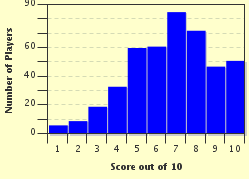Quiz Answer Key and Fun Facts
1. In 1665, Robert Hooke published the results of his work using microscopes to study plant and insect life and coined a new word to describe a fundamental biological structure he had observed in tree bark. Which word did he use?
2. In March 1665 England declared war on one of its main rivals in the battle for world trade, a country which had already become the centre of the tulip trade - which country was that?
3. In 1665 two French fur traders went to Oxford to ask Charles II for financial support for the expansion of their business. The company that resulted from their efforts became the oldest commercial corporation in North America. What is it called?
4. Pierre de Fermat, who died in 1665, constructed mathematical proofs as a hobby. Fermat's Last Theorem puzzled mathematicians for centuries but he left no proof of it, merely stating that he had no space left after writing the theorem down. Where did Fermat write his Last Theorem?
5. 1666 saw the first production of 'Le Misanthrope' by Moliere who was, and is, one of the most famous French playwrights. Moliere suffered from tuberculosis and in 1673 he collapsed when performing in another of his plays and died shortly afterwards. Moliere probably always looked sickly no matter what he wore but which theatrical superstition arose after his death?
6. In 1665-66, Johannes Vermeer painted a portrait which has several titles, including simply 'Head of a Girl in a Turban'. The painting is usually referred to by another name - a name which became the title of a novel and an Oscar-winning film starring Colin Firth and Scarlett Johansson. What is the painting's most common title?
7. In addition to being responsible for building the Taj Mahal, the Red Fort, and other notable buildings in India, Shah Jahan, who died in 1666, was the first owner of the Peacock Throne. Which famous diamond did Shah Jahan have embedded in the Peacock Throne?
8. The oldest surviving violin made by Antonio Stradivari was created in 1666; it has a label showing he was, or had been, a student of Nicolai Amati, whose family were then the most famous and most successful violin-makers in the world. Where did Amati and his famous apprentice both come from?
9. In 1666, the University of Cambridge was closed due to the spread of the plague and Isaac Newton went back to his childhood home in the country where he worked on optics, the laws of gravitation, and the development of calculus. How old was Newton in 1666 when he observed the falling apple that led to the theory of gravity?
10. In 1666, the Great Fire of London began in Thomas Farriner's shop in Pudding Lane and spread across 400 acres of timber buildings. The fire lasted for four days, and left 200,000 people homeless. In what sort of shop did the fire start?
Source: Author
flopsymopsy
This quiz was reviewed by FunTrivia editor
bloomsby before going online.
Any errors found in FunTrivia content are routinely corrected through our feedback system.

